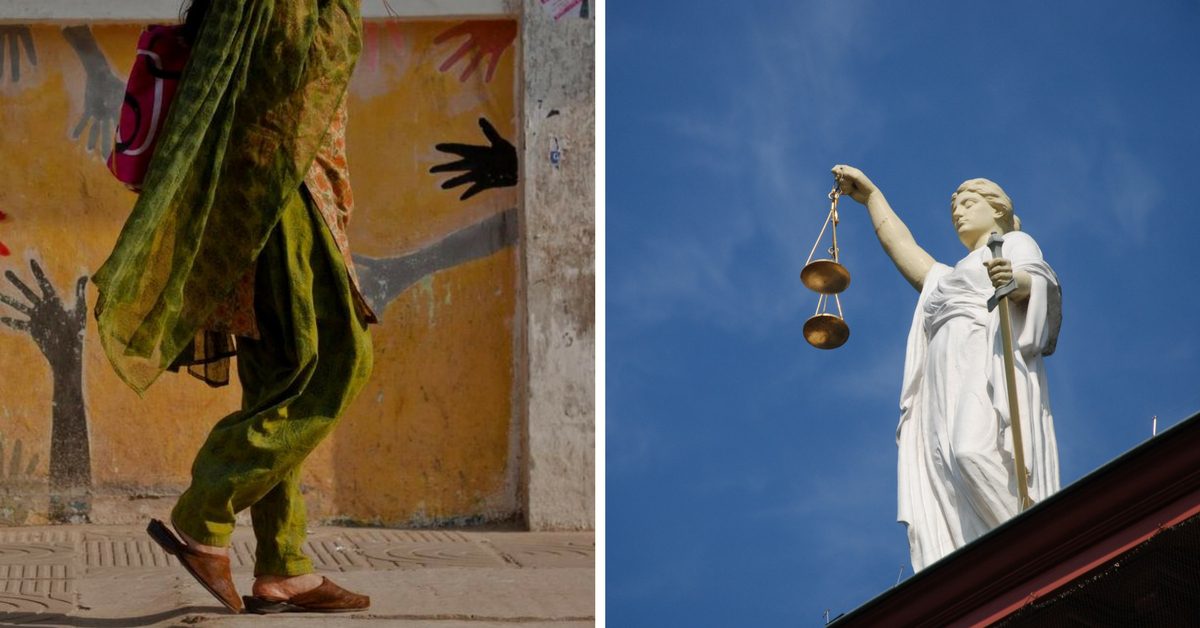Reading Time: 5 minutes
Sex-related offences are increasing at a very fast rate, which needs special attention of lawmakers, criminologists, sociologists, and educationists. Simply making stringent laws, such as we have recently seen in the ordinance relating to rape, is not sufficient to deal with the epidemic of sex-related crimes. The government’s approach to making provision for death penalty for rape is ad-hocism aimed at expediency. We need a pragmatic shift in the strategy of controlling such crimes. Here’s a report, for Different Truths.
Psychology of crime in India has been changing at a very fast pace outsmarting our overall crime control strategy. The strategy we adopt always becomes outdated in the changed situations in the society. The government and its agencies responsible to control crime tend to stick to the older strategies despite the changed scenario, resulting in their failure.
Though the data in the annual report 2017-18 shows only a minor increase of 0.9 percent in Indian Penal Code related crimes in 2016, compared to the previous year, the changing pattern of crime has created an alarming situation that disturbs not only the law and order but also public order.
Offences affecting human body had decreased by 8.5 percent with the decrease in offences like murder, dowry deaths, grievous hurt, injuries under rash driving, and human trafficking. However, the changed pattern of crime shows the highest increase of 62.4 percent under unnatural offences, followed by attempt to commit rape (29.1), attempt to commit culpable homicide (23.0), rape (12.4), attempt to commit murder (6.9), kidnapping and abduction (6.0), causing death by negligence (4.3), assault on women with intent to outrage modesty (2.8), and culpable homicide not amounting to murder (0.9). Incidents of cruelty by husbands or his relatives, and insult to the modesty of women, however, showed a decreasing trend.
It is clear that sex-related offences are increasing at a very fast rate, which needs special attention of lawmakers, criminologists, sociologists, and educationists. Simply making stringent laws, such as we have recently seen in the ordinance relating to rape, is not sufficient to deal with the epidemic of sex-related crimes. The government’s approach to making provision for death penalty for rape is ad-hocism aimed at expediency. We need a pragmatic shift in the strategy of controlling such crimes. We need to curb those activities that promote sexual urge in the human being to the extent of it becoming a crime.
Offences against the state have registered 21.1 percent increase. Offences against public tranquillity have decreased by 4.9 percent, but offences of promoting enmity between different groups increased by 12.7 percent. However, it is a good sign that the incident of rioting and unlawful assembly has reduced despite an increase in promoting enmity between communities in the name of caste and religion.
We had only two percent increase in offences against property. Criminal trespass and burglary, robbery, dacoity, preparation for dacoity, criminal breach of trust, and cheating have decreased but there was an alarming increase in arson by 15.3 percent, extortion by 9.2 percent and theft by 5.7 percent. Counterfeiting and forgery of documents have decreased, while other IPC crimes increased by 10.5 per cent.
Crimes under special and local laws showed a 5.4 per cent increase. Incidents under women related acts, such as dowry prohibition, immoral traffic prevention, protection of women from domestic violence, and indecent representation of women prohibition, and Sati prevention decreased. However, we have a phenomenal rise in the criminal incidence under special laws relating to children. There was 173.5 percent rise in prenatal diagnostics, 11.3 percent in child marriage, and 54.6 percent under Juvenile Justice (care and protection) Act. It shows that our children have become most vulnerable to all sorts of crime, even more, vulnerable than women.
There was a sharp decrease in incidents against scheduled caste and scheduled tribes, but a sharp increase of 233.3 percent in breaching the official secrets, along with 17.9 percent rise in damage to public property was registered. There was also a rise of 4.4 percent under Arms Act, and 12.2 percent in Explosive Act.
Crimes under Information Technology have increased by 7.1 percent. Liquor-related crimes have also increased – 2 percent under prohibition and 15 percent under excise. There was a decrease of 3 percent in narcotic drugs and psychotropic substance-related crimes. Gambling has increased by 14.5 percent, electricity theft by 31.1 percent, the crime against wildlife by 3.6 percent, and water pollution by 10 percent.
There was 140.5 percent increase in crime under Emigration Act and 168.4 percent under Citizenship Act. Indian Railways suffered 7.5 percent increase in crime under Indian Railways Act. There was an increase of 39.1 percent in bonded labours, 213.5 percent under Antiquities and Art Treasures Act, and 19.7 an insult to the national honour.
Crime against Scheduled Castes under IPC has increased by 9.6 percent. Among such crimes, the highest increase was of an attempt to commit rape, which rose by 100 percent. All crimes except dacoity and arson were on the increase. Murder rose by 11.2, attempt to murder 34, grievous hurt 6.4, assault on women to outrage her modesty by 13.3, an insult to the modesty of women by 39.7, kidnapping and abduction by 24.5, rape by 9.2, riots by 17.7, and robbery by 34.9 percent. Total atrocities against them increased by 5.5 percent.
IPC crimes against Scheduled Tribes increased by 5.1 percent. The highest increase of 158.3 percent was under insult to the modesty of women. There was a decrease in the murder but 5.7 percent rise in the attempt to murder. Increase in the assault on women to outrage modesty was 2.1 percent, kidnapping and abduction 31.5, rape 2.3, riots 7.5, robbery 11.1, and dacoity 50 percent. Total atrocities against STs rose by 4.6 percent.
 As for crime against women, abetment of suicides rose by 10 percent, causing miscarriage without women’s consent by 755.6 percent, death from causing miscarriage by 941.7 percent, acid attack by 21.2 percent, kidnapping and abduction by 8.8 percent, rape by 12.4 percent, attempt to commit rape by 29. 1 percent, unnatural offences by 352.8 percent, and attempt to outrage modesty 2.8 percent. There was 17.4 per cent increase in sexually explicit material.
As for crime against women, abetment of suicides rose by 10 percent, causing miscarriage without women’s consent by 755.6 percent, death from causing miscarriage by 941.7 percent, acid attack by 21.2 percent, kidnapping and abduction by 8.8 percent, rape by 12.4 percent, attempt to commit rape by 29. 1 percent, unnatural offences by 352.8 percent, and attempt to outrage modesty 2.8 percent. There was 17.4 per cent increase in sexually explicit material.
Total crime against children rose by 13.6 per cent. Infanticide rose by 2.2 per cent, foeticide by 48.5, kidnapping by 30.6, trafficking by 53.8, selling minor girls for prostitution by 9.9, unnatural offences by 53.2, and sexual offences by 141.5 per cent.
Gyan Pathak
©IPA Service
Photos from the Internet
#Crime #CrimeInIndia #CrimeAgainstWomen #CrimePercentage #IncreaseInCrime #JusticeAgainstCrime #SexualHarrasment #Rape #Kidnapping #Trafficking #Prostitution #SexualAbuse #DifferentTruths















